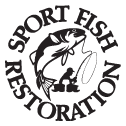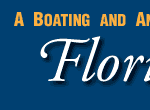CONTACT US:
Florida Fish and Wildlife
Conservation Commission
Fish and Wildlife
Research Institute
100 Eighth Avenue SE
St. Petersburg, Florida 33701
727-896-8626
|
|
|
Mote Marine Laboratory
Tropical Research Laboratory
24244 Overseas Hwy.
Summerland Key, FL 33042
305-745-2729
|
|
|

|
|
This project was funded in part by a grant awarded from Mote Marine Laboratory's Protect Our Reefs Grants Program, which is funded by proceeds from the sale of the Protect Our Reefs specialty license plate. Learn more at .
|

|
|
Additional funding for this project was obtained through the Federal Aid in Sport Fish Restoration Fund.
|
|
|
 |
There are several things that you, the boater, can do to ensure that you have a safe day on the waters in the Florida Keys.
File a float plan and leave it with a reliable person at a marina or elsewhere. Include a description of the vessel, radio and safety equipment on board, planned stops, names of passengers, and when you expect to return. Ask that person to notify the Coast Guard or other local authority if you do not return as scheduled.
Plan your route in advance. Use the appropriate nautical charts to reference depth, bridge clearance and other natural and man-made features before you leave.
Make sure your craft has the required safety equipment on board.
To meet U.S. Coast Guard requirements, a boat must have a U.S. Coast Guard-approved Type I, II, III, or V life jacket for each person aboard. In order to meet the requirements, all life jackets must be used in accordance with the instructions on their label. In some cases, the life jackets must be worn while the boat is underway in order to meet the requirements. Boats 16 feet and over must have at least one Type IV throwable device as well. Adult-sized life jackets will not work for children. Special life jackets are available for children. To work correctly, a life jacket must be worn, fit snugly, and not allow the child’s chin or ears to slip through. Life jackets should be tested for wear and buoyancy at least once each year. Waterlogged, faded, or leaky jackets should be discarded. Life jackets must be properly stowed.
Develop a life jacket habit! Wear your life jacket, also known as a Personal Flotation Device (PFD), all of the time while boating. Most people who lose their lives in a boating accident drown. Find a comfortable life jacket and wear it! Inflatable life jackets are so comfortable you won’t feel like you are wearing one.
Observe and obey posted speed limits. When in doubt, slow down.
Watch your wake. Remember, you are responsible for damage or personal injury caused by your vessel’s wake. Large wakes can overturn smaller vessels and damage boats which are moored at the dock.
Know your navigation rules.
Don’t drink and operate a boat.
Be sure that your boat has the required and working navigation lights if boating at night or in poor weather conditions.
|
The U.S. Coast Guard Auxiliary offers courses in boating safety, seamanship, and navigation to boaters of all skill levels. They also offer a free boat inspection to advise boaters of state and federal safety requirements. Violations found during these courtesy exams will not be reported to authorities.
The Fish and Wildlife Conservation Commission's Boating and Waterways section provides a wealth of information about boating safety, regulations, and classes.
|
|
If you are out snorkeling, diving, fishing, paddling, or boating and see anything that may be unusual or out of the ordinary in Florida Keys waters, please record the location, date, and time, and contact the Marine Ecosystem Event Response and Assessment (MEERA) project. They can be reached by phone (305-395-8730), e-mail, or online.
If you have any questions, comments, or suggestions about this Web site, please e-mail us at Boating_Guides@MyFWC.com.
Would you like to receive notices of changes to this Web site and the Boating and Angling Guides to the Upper, Middle, or Lower Keys? If so, please e-mail us and include SUBSCRIBE-KEYS in the subject line.
|























